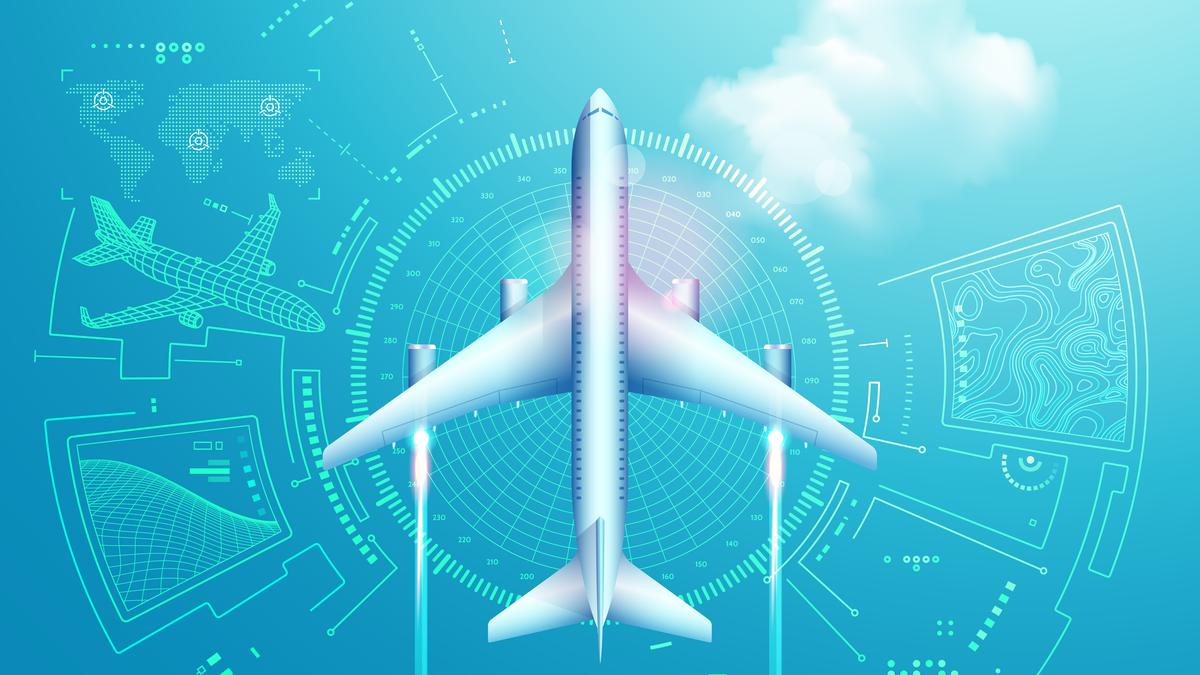
‘Enhanced cooperation in the aviation sector is just one example of how the UAE-India partnership can evolve to unlock new avenues of mutually beneficial growth and integration’
| Photo Credit: Getty Images/iStockphoto
During a recent tour of the Navi Mumbai International Airport in Maharashtra, I was left deeply impressed by the scale of India’s aviation ambitions. Navi Mumbai International Airport has the potential to serve as a game-changer in taking India’s aviation sector to exciting new heights, providing new avenues for the Indian travelling public to benefit from an increasingly inter-connected world.
As the pace of growth in India’s aviation sector — it is already the world’s third-largest domestic market in terms of passenger numbers — continues to quicken and the Government of India’s initiatives such as the Ude Desh Ka Aam Nagrik (UDAN) airport scheme are rapidly implemented, it is essential that an equally visionary approach to regulation and international partnerships is also considered.
The UAE as a vital travel destination
For decades, the United Arab Emirates (UAE) has proven itself to be a close strategic partner and friend to India. Today, the UAE is India’s most significant outbound travel market, with over 4.5 million Indian tourists visiting the UAE in 2023. Every week, Indian carriers fly over 600 times to the UAE, while UAE carriers operate over 500 weekly services to India. On the surface, these numbers appear significant. However, they are far below meeting current, let alone, future consumer demand.
The impact of what is effectively a mismatch between supply and demand has directly contributed to spiralling ticket prices and a lack of choice for the UAE and Indian travelling public alike.
Under current bilateral air service arrangements, the UAE’s carriers are limited to operating to a total of only 15 Indian cities, thus having no choice but to ignore the consistent demands of key Indian growth centres, including Surat, Visakhapatnam, Indore, Tiruchirappalli and Patna to operate services. Similarly, Indian carriers are unable to increase their level of frequencies to Dubai, despite unprecedented interest from Indians to visit family and engage in business and leisure activities in this vital global hub.
The benefits of a modernised strategy
With estimates suggesting that for every 1% increase in Indian passport holders, a further 10 million Indians will seek to travel overseas, this situation will only grow more acute. Restrictive bilateral regulations will contribute to further increases in the price of airline tickets, limit the ability of Indian citizens to travel abroad, and potentially inhibit the advancement of broader UAE-India investment, trade, and economic partnerships.
Just as the UAE and India have expanded cooperation through trade agreements such as the Comprehensive Economic Partnership Agreement (CEPA), there is an urgent need for a more progressive and open approach on aviation. A modernised aviation strategy will act as an economic multiplier, drive investment, and ensure that our aviation partnership can become a key pillar of regional and international connectivity and growth.
Beyond revisiting the regulatory frameworks that guide our aviation relationship, the UAE is keen to support, through new investments and partnerships, India’s ambition to become a global aviation powerhouse.
Whether this support is in the form of knowledge-sharing and the training of Indian pilots, partnering in India’s rapidly emerging aviation maintenance, repair, and overhaul (MRO) industry, promoting India’s globally renowned tourism sector, investing in the Indian government’s UDAN airport scheme to better connect Tier-2 and Tier-3 Indian cities, or in achieving win-win outcomes for our respective airline carriers, it is imperative that we seek new areas of collaboration in this critically important sector.
Cooperation over competition
Fundamentally, an opportunity exists to establish a combined sky and aviation eco-system that privileges cooperation over competition. Through greater engagement, we can ensure that the respective aviation sectors of both our countries are able to grow and succeed, whilst offering the citizens of the UAE and India the ability to connect, engage, and thrive.
Just as Dubai and Abu Dhabi benefit from their status as global aviation hubs, cities throughout India have the potential to attain similar levels of seamless connectivity. By better connecting and supporting the aviation ambitions of emerging Indian cities, we can together ensure that inclusive and sustainable economic growth are felt not only within India, but also far beyond its borders.
Enhanced cooperation in the aviation sector is just one example of how the UAE-India partnership can evolve to unlock new avenues of mutually beneficial growth and integration. Building upon the significant strides we have achieved over recent years in our bilateral strategic ties, even the sky is not the limit in what we can achieve in our aviation partnership.
Abdulnasser Alshaali is the Ambassador of the United Arab Emirates (UAE) to the Republic of India
Published – March 05, 2025 12:08 am IST
